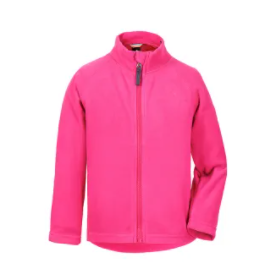Do fleece jackets keep you warm?
As the colder months settle in, the quest for warmth becomes a top priority, and fleece jackets emerge as cozy contenders in the realm of winter wear. But the pressing question remains: Do fleece jackets keep you warm?
1. Understanding Fleece Fabric:
1.1 Composition:
Fleece jackets are typically made from synthetic materials such as polyester. The fabric is designed to mimic the insulating properties of natural wool while offering enhanced moisture-wicking capabilities.
1.2 Loft and Pile Structure:
Fleece fabric features a lofted and piled structure, creating pockets of air that trap and retain body heat. This design mimics the warmth-retaining properties of natural animal fur.
2. Insulating Power of Fleece:
2.1 Thermal Efficiency:
The lofted structure of fleece traps air, creating a thermal barrier that prevents heat loss. This trapped air serves as an insulator, effectively preserving body warmth in cold conditions.
2.2 Moisture Management:
Fleece has excellent moisture-wicking properties, pulling sweat away from the body and allowing it to evaporate. This feature is crucial in maintaining warmth, as wet clothing can lead to a rapid loss of body heat.
3. Weight and Warmth Ratio:
3.1 Lightweight Insulation:
Fleece jackets strike a balance between lightweight design and effective insulation. They provide warmth without the bulk often associated with traditional winter garments.
3.2 Layering Potential:
Fleece jackets are versatile for layering. Their relatively thin profile allows for easy integration into layered clothing systems, providing customizable warmth based on the severity of the cold.
4. Breathability and Comfort:
4.1 Breathable Fabric:
Fleece is inherently breathable, allowing air circulation while retaining warmth. This breathability contributes to comfort by preventing overheating during physical activities.
5. Types of Fleece:
5.1 Microfleece:
Microfleece is a lightweight and soft variation of fleece, suitable for mild to moderate cold conditions. It is often used in mid-layer garments.
5.2 Polartec Fleece:
Polartec is a high-performance fleece known for its thermal efficiency. It is commonly used in outerwear for extreme cold weather conditions.
6. Considerations and Limitations:
6.1 Wind Resistance:
While fleece provides excellent insulation, it may lack wind resistance. In windy conditions, adding a windproof layer over fleece can enhance its effectiveness.
6.2 Water Repellency:
Fleece itself is not inherently water repellent. In wet conditions, it may become saturated, reducing its insulation properties. Water-resistant coatings or combining fleece with a waterproof layer can address this limitation.
In conclusion, fleece jackets are indeed effective at keeping you warm, owing to their lofted structure, thermal efficiency, and moisture-wicking capabilities. The versatility, breathability, and lightweight design make fleece a popular choice for various cold-weather activities. However, understanding the specific type of fleece, its intended use, and potential considerations such as wind and water resistance are key to maximizing its warmth-retaining potential. When chosen and used appropriately, a fleece jacket can be your snug and reliable companion in the face of winter's chill.




Comments